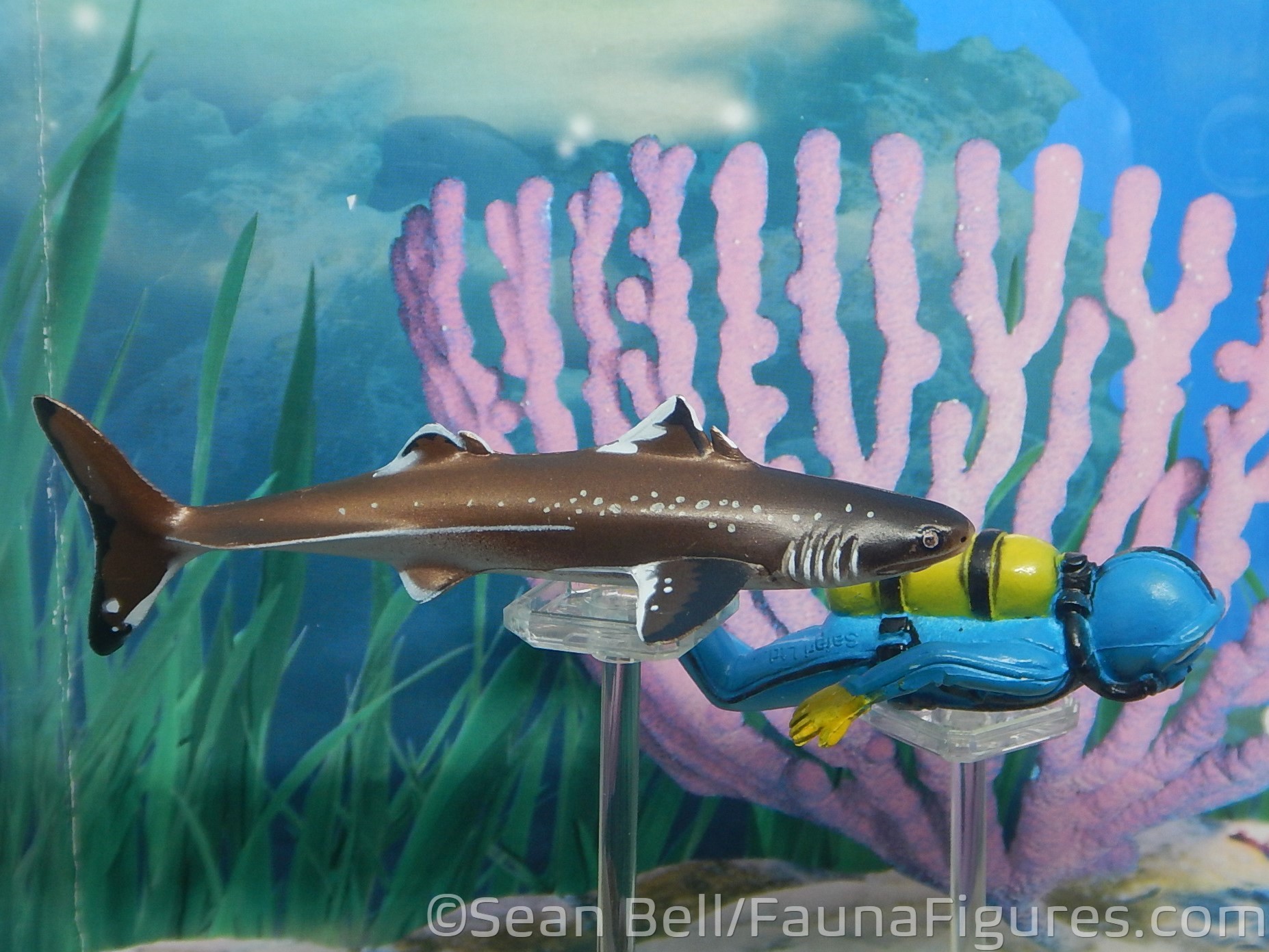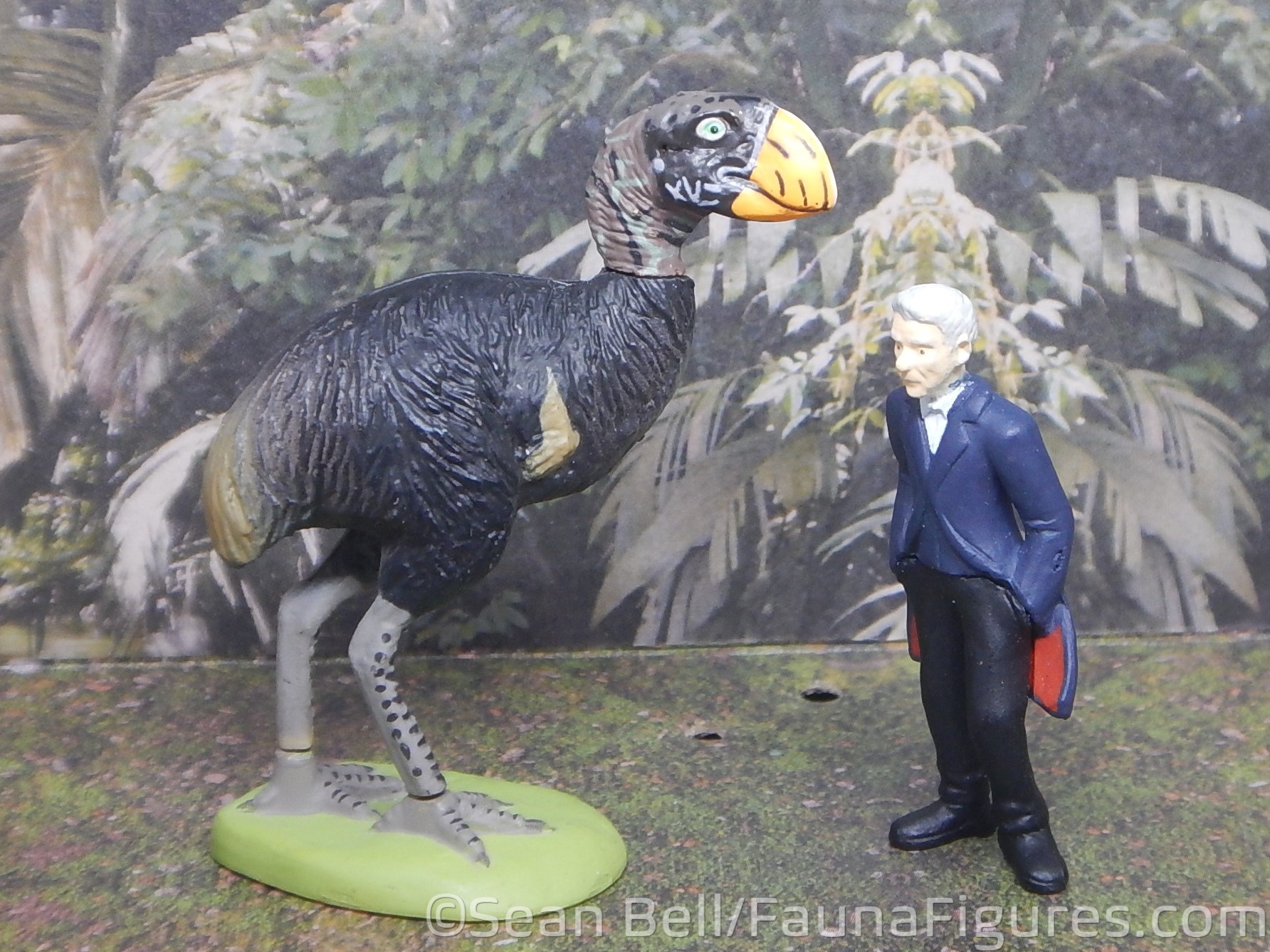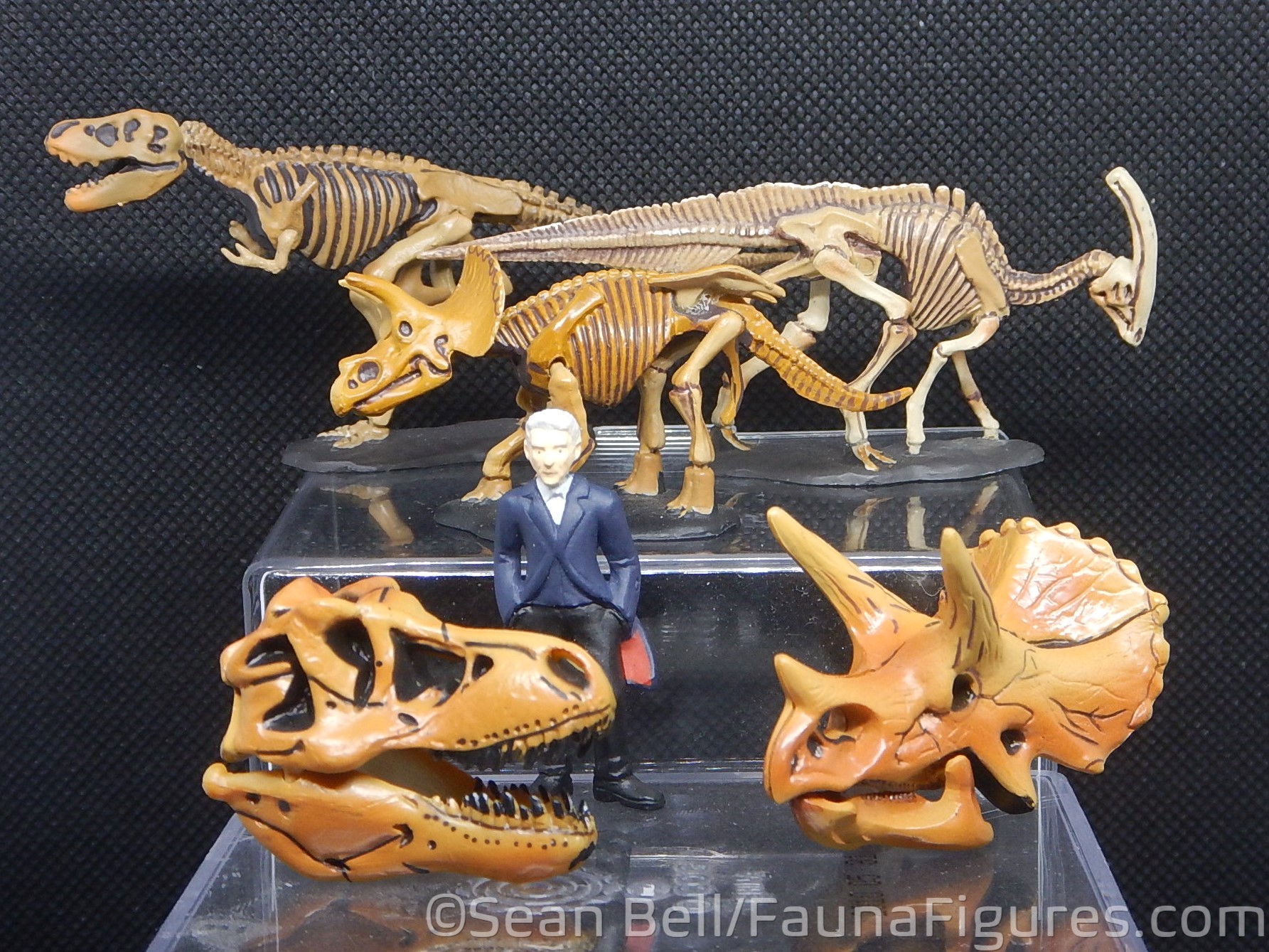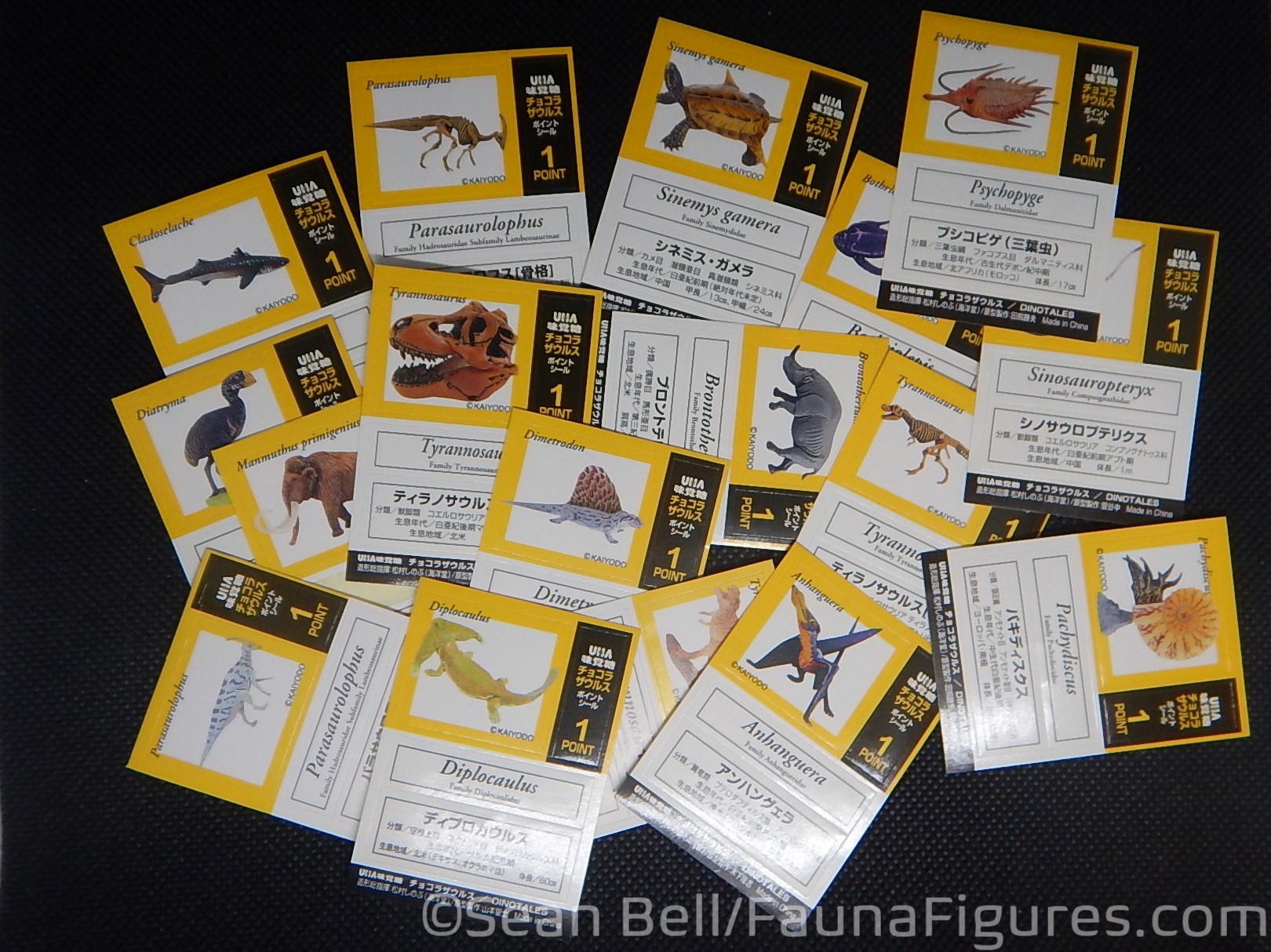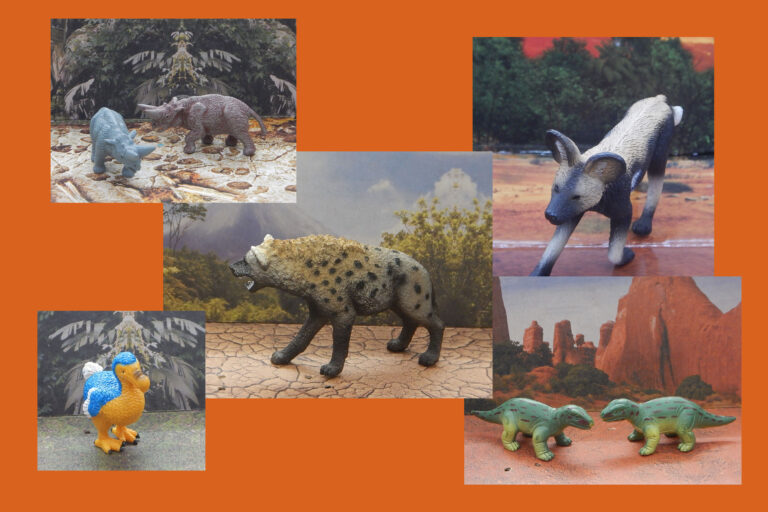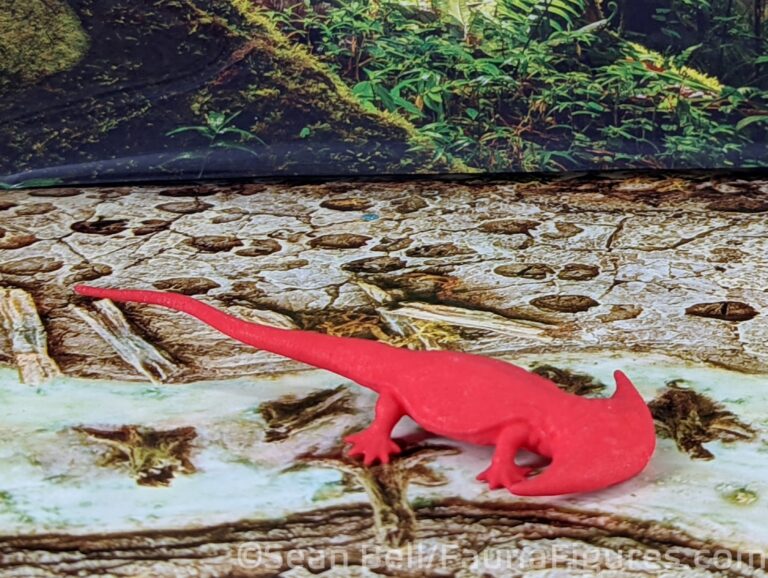Part 2 – Palaeozoic and Cenozoic Figures!
And we’re back with Part 2, featuring the best Palaeozoic and Cenozoic figures the Dinotales Series 1 had to offer (not really a surprise if you’ve looked at the banner)! Another nine figures, after the 15 from the first part. In case you missed it, the first post featuring the dinosaurs and other Mesozoic animals can be found here. There are some really cool ones in this lot though. Let’s go from geologically oldest to youngest. Once again, the human models are maybe kind of to scale, but sometimes not really.
The first bunch I showed had some really unique animals, and at least some unique takes on established ones. The animals represented here, Palaeozoic and Cenozoic, are generally the first times many of them were made, or at least the first representatives that I was able to get. And the distinguished, sailback and tusked animals of course!
The fish and invertebrates from the set are all really cool models, very well done and representing animals that I had never seen as figures before. Getting my first placoderm and prehistoric shark in the collection was a big deal for me–and if I had to get a trilobite, might as well be a weird one. I might have already owned an Opabinia from the ROM series, but the Dinotales one is of course a higher level one.
That the set included the ‘amphibian’ Diplocaulus and what I thought of as a very good Dimetrodon as well, really helped flesh out the pre-dinosaur models in the set. It was, however, the Cenozoic offerings that originally caught my attention, and sent me down the whole Dinotales rabbit hole. And all because I studied fossils in Saskatchewan.
Until I went to grad school, I was aware that ‘brontotheres’ were a thing; one of many vaguely rhino-like mega-mammals from somewhere in the Tertiary. But once I got there, I was out in the Cypress Hills looking for fossils, and it turns out that brontotheres are well known from there, at least the Eocene deposits (and this created a whole stratigraphic thing that I needed to come to understand but anyway…) And of course, this meant I needed to add one to my collection of course. I had done some searches, and came across a few–Starlux, Ral Partha…that was about it. Both discontinued even in the early 2000s, I kept scouring eBay (don’t worry, I did eventually get both!) But then I randomly stumbled across this plastic one, apparently from Japan–from a Canadian seller no less! So I made the purchase and was shocked-SHOCKED!-at this amazing figure I found. Of course, that meant using the meager materials I had (info tag, a few key words like the company and series name) and started looking.
Eventually I found some reasonably priced ones in Japan. I was able to strike up a direct relationship with a man name Hide Iida. With his help, I was able to obtain a lot of single figures of series 1 and 2. Plus, I was in on the ground floor when series 3 came out! It also introduced me to the non-prehistoric animals also made by Kaiyodo, letting me add all kinds of unique and unfamiliar animals to my collection. I had mentioned that I introduced a lot of my fellow students to these models (grad and undergrad) but it was more than that–when sets were released, I was the organizer, taking orders and bringing in what I could, then figuring out how to get the funds there (Paypal wasn’t a thing to Japan at that time). But it let a lot of people pick up some representatives of the animals they studied and/or loved. Not me though–I studied fossil rodents, and while I picked up some weird rodent relatives, Kaiyodo never gave me a prehistoric one (only one exists that I know of from anyone).
I didn’t complete any the prehistoric sets back then (that would happen later, and it would sometimes be a more costly mistake on my part!) and I had never intended to get every ‘modern’ animal (there are hundreds more than there are prehistoric). But this introduction to what Japan produced was a real eye opener. It led to finding out about the potential of other Japanese companies (such as Yujin, Takara, and Epoch) as well as other small, buildable figures like (of course) Yowies. It was a major development for my collection, introducing me to the fun of connecting with people from around the world with a shared interest, and the opportunities to sell and trade all over the world (seriously, all over!) It’s amazing what a small plastic brontothere can lead to.
Oh, and as always–do what you can to get at least a few of these if you don’t have them. I even know a guy if you need a little help. Better prices than most auctions at least.




